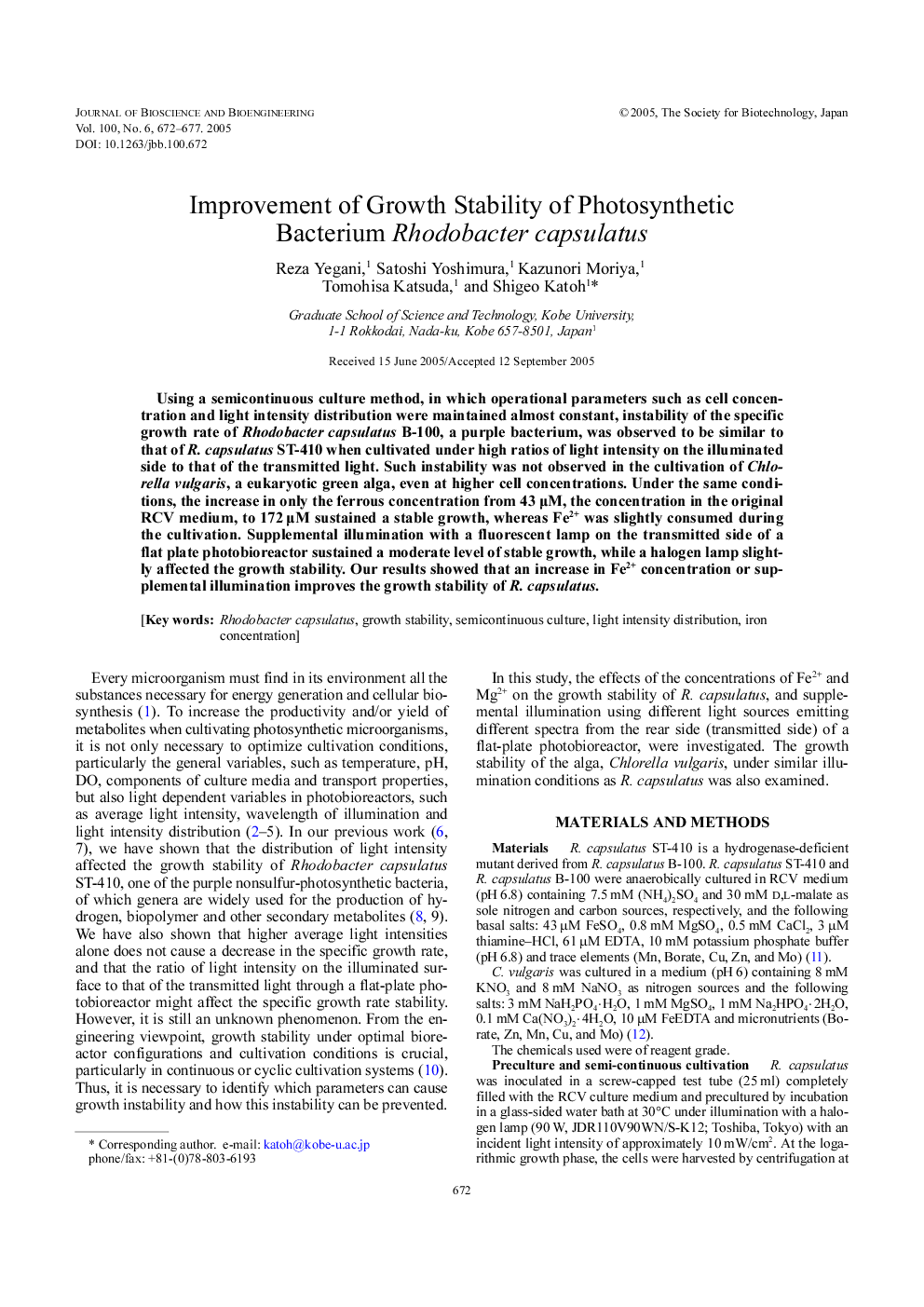| Article ID | Journal | Published Year | Pages | File Type |
|---|---|---|---|---|
| 9603098 | Journal of Bioscience and Bioengineering | 2005 | 6 Pages |
Abstract
Using a semicontinuous culture method, in which operational parameters such as cell concentration and light intensity distribution were maintained almost constant, instability of the specific growth rate of Rhodobacter capsulatus B-100, a purple bacterium, was observed to be similar to that of R. capsulatus ST-410 when cultivated under high ratios of light intensity on the illuminated side to that of the transmitted light. Such instability was not observed in the cultivation of Chlorella vulgaris, a eukaryotic green alga, even at higher cell concentrations. Under the same conditions, the increase in only the ferrous concentration from 43 μM, the concentration in the original RCV medium, to 172 μM sustained a stable growth, whereas Fe2+ was slightly consumed during the cultivation. Supplemental illumination with a fluorescent lamp on the transmitted side of a flat plate photobioreactor sustained a moderate level of stable growth, while a halogen lamp slightly affected the growth stability. Our results showed that an increase in Fe2+ concentration or supplemental illumination improves the growth stability of R. capsulatus.
Related Topics
Physical Sciences and Engineering
Chemical Engineering
Bioengineering
Authors
Reza Yegani, Satoshi Yoshimura, Kazunori Moriya, Tomohisa Katsuda, Shigeo Katoh,
